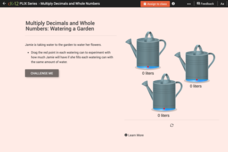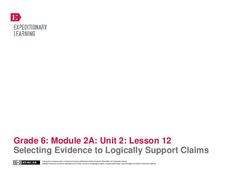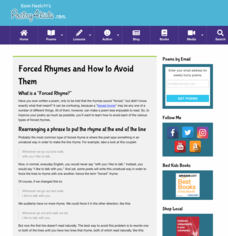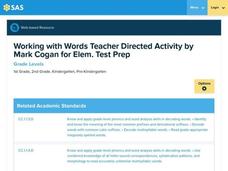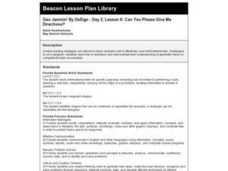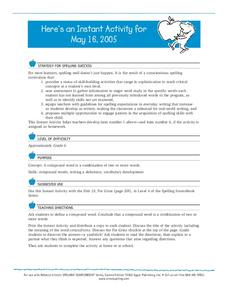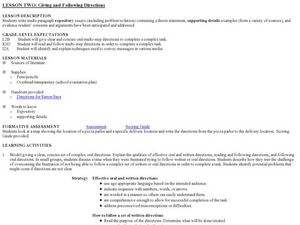CK-12 Foundation
Properties of Multiplication in Decimal Operations: Balloon Animals
Commutive and associative properties are the focus of a five-question interactive. Dealing with decimal multiplication and addition, mathematicians solve multiple-choice and true or false questions using a model that moves balloons along...
CK-12 Foundation
Estimation to Check Decimal Multiplication: Watering a Garden
Mathematicians solve six multiple-choice and true or false questions using their knowledge of estimation and multiplying decimals. The interactive provides a garden-themed tool that creates a visual aid of three watering cans to assist...
Project Maths
Complex Number Operations
What do animated videos have to do with mathematics? Using operations of complex numbers and their representations on the complex plane, high schoolers observe how mathematics could be used to move animations. The instructional...
EngageNY
Selecting Evidence to Logically Support Claims
It's time to make a rule sandwich! After exploring the writing assignment's rubric and analyzing a model essay, learners are guided through the prewriting phase using the sandwich technique. Pupils create their sandwich addressing the...
SEN Teacher
Literacy Dice
Reinforce literacy skills using a six-sided die that focuses on phonics and story starters. Scholars roll, and show what they know about blends, plots, and more!
Poetry4kids
Forced Rhymes and How to Avoid Them
Ready to take your poetry writing to the next level? Use an independent lesson to iron out all those forced rhymes, wrenched rhymes, and near rhymes from first-draft poems.
Mathematics Assessment Project
Smoothie Box
Pupils demonstrate their understanding of nets by designing a net of a box that contains 12 bottles. Given the full size top and side views of the bottle, they determine the dimensions needed for the finished box. The directions do...
EngageNY
Using Quotes to Explain Relationships: How the Invention of Television Changed People’s Lives
Television changes the world. Scholars determine the gist of the video clip Television Takes the World by Storm and article How Do
Inventions Affect the Way We Live? They then do a second view and read to complete an Explanation Task...
Curated OER
The Origin of Words
Help your class identify known words in a given passage. They will read a passage from the Greeks and Romans and identify five words still in use today. Then define four of the five words.
Pennsylvania Department of Education
Working with Words Teacher Directed Activity by Mark Cogan for Elem. Test Prep
Young scholars build word families. In this interactive language arts activity, students visit a website where they play a game creating word families. Young scholars may print out their work when finished.
Curated OER
Geo Jammin' By DeSign - Day 2, Lesson 8: Can You Please Give Me Directions?
Students participate in a guided reading experience by following directions to cut out tangrams. They listen to the directions and cut as the reading progresses.
Curated OER
Compound Words
Sixth graders define a compound word. For this compound word lesson, 6th graders complete a worksheet filling in the compound words defined.
Curated OER
Giving and Following Directions
Students discover how to give and receive directions to complete tasks. In this communication lesson, students write directions based on a map of the location of a pizza parlor and delivery locations.
Curated OER
Microsoft Word~About the Author
Fourth graders investigate how to create a document named "About The Author". The teacher uses a LCD projector to guide the instruction and provide examples for the class. They also include graphics in the document and practice accessing...
Curated OER
East Asia: Population Facts and Figures
Students examine population information from East Asian countries. Using a specified website, pupils explore the population of China, Japan, North Korea and South Korea. Classmates examine the population density compared to the world's...
Curated OER
Using Charts and Graphs to Study East Asia's Modern Economy
Students examine East Asia's modern economy. In groups, classmates use the internet to compare the resources, products, and economy of specified countries. After collecting the data, pupils create charts, tables and graphs. They...
Curated OER
Understanding Math Problems
In these word problems worksheets, students read the 2 word problems and check the correct answer for the questions that relate to each problem. Kids solve the equations and label their answers. Students then read the last sets of word...
Curated OER
Writing Numbers in Word Form - 11 to 20
In these number words worksheets, students write the spelling of the number words for the 10 problems. Students then arrange the jumbled letter to form the correct spelling of the given number for the 9 problems.
Curated OER
Math – Writing Numbers in Word Form - 1 to 10
In this writing numbers in word form worksheet, students write each of the numbers 1-10 using the correct spelling in the spaces provided.
Curated OER
Giving Directions
First graders view the object on their desk observing the colors, patterns, and the way the object is put together but not touching it. They then write on paper the directions they would give someone so that they would be able to build...
Curated OER
Quiz: Direct Variation
In this direct variation instructional activity, students solve ten questions about direct variation. Each problem is presented in story problem format. Students write the direct variation equation and solve for the required information.
Curated OER
Give and Read Multi-Step Directions
Learners give and follow directions. In this written communication lesson, students use the provided step-by-step directions to draw pictures, discuss the importance of adequate directions and then explain to other learners how they drew...
Curated OER
Direct Objects
In this grammatical skills worksheet, students examine 20 sentences and identify the action verbs and directs objects in each of the sentences.
Curated OER
MYSTERY PICTURES (Following Oral Directions)
Students draw pictures while following simple instructions. They discuss the importance of following directions explicitly. They discuss the differences between each child's work. They follow a second set of directions.

